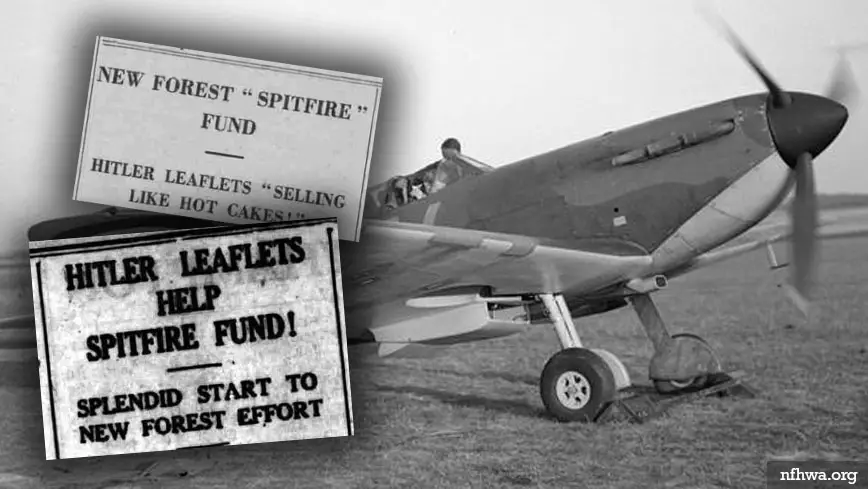How Hitler Inadvertently Helped Fund a New Forest Spitfire
I’ve researched many interesting human stories connected to the New Forest during the Second World War, but one of the most intriguing and somewhat ironic tales involves Hitler inadvertently contributing to the funding of a Spitfire.
This incredible story starts in May of 1940, when Lord Beaverbrook, a prominent newspaper baron and influential political figure, established the Spitfire Fund. This was part of a broader effort to boost British morale and support the production of fighter aircraft in response to the threat of a German invasion.
The threat of invasion had been discussed in government as early as October 1939. But it wasn’t until spring of 1940 that the fear started to become real. The Royal Air Force (RAF) needed significant resources to counter the Luftwaffe, and so production of aircraft such as Spitfires and Hurricanes was ramped up. However, producing enough aircraft to meet the demand became a financial challenge.
Lord Beaverbrook was appointed Minister of Aircraft Production in May, a position he was persuaded to take by his political ally, Winston Churchill who later praised his “vital and vibrant energy”. This role tasked Beaverbrook with overseeing the manufacture and funding of aircraft, something he was determined to address. He was inspired by Jamaica’s Daily Gleaner who had asked for the cost of a bomber. Beaverbrook thought why not see if public conscription funding would work for the Spitfire. As part of this drive, he launched the Spitfire Fund in same month. The initiative encouraged businesses, communities, and citizens from all walks of life to contribute, donate, and fund raise as much money as possible to help pay for production.
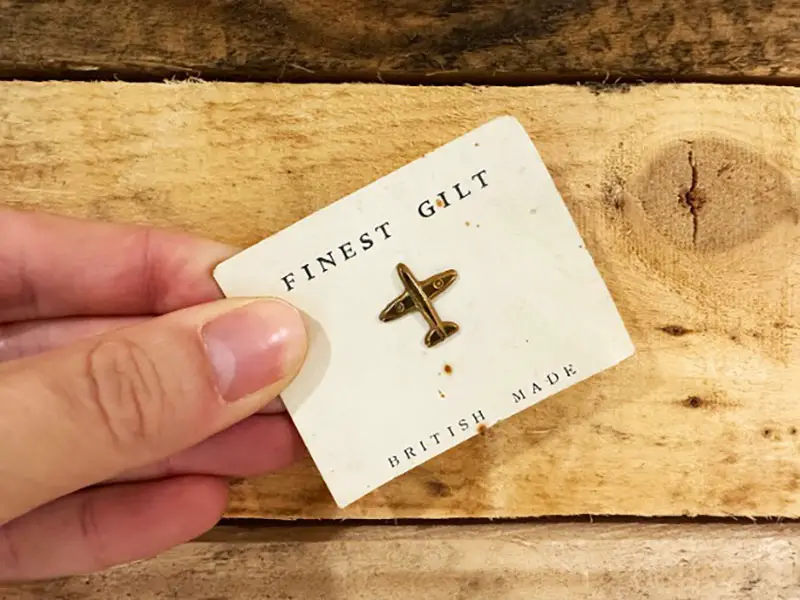
Beaverbrook’s media connections helped promote the initiative and created a sense of competition among communities to outdo each other in raising funds. He said the cost to produce a Spitfire was £5,000 (£355,000 in 2025). The actual cost was closer to £12,000 (£860,000 in 2025). He deliberately priced a Spitfire at £5,000 as he was anxious to not price it out of reach for the people fundraising.
People from all over the country, as well as sympathetic allies abroad, started raising money, and the New Forest area was no different. Posters including slogans like “A Spitfire a day keeps the Nazis away”, and “Support the District Spitfire Fighter Fund” appearing on the walls of village halls, post offices, shops, and pubs in the local area. In fact, there’s a copy of one hanging on the wall of the Turfcutters Pub in East Boldre still to this day (which could be a replica, I am not sure – see below).
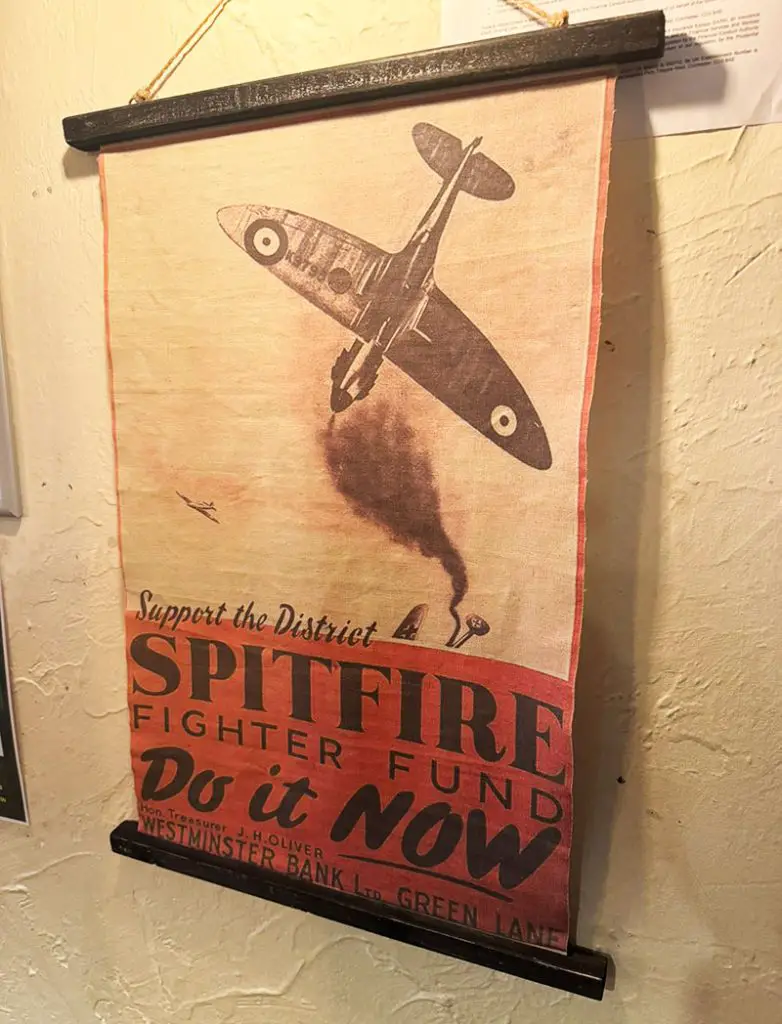
The New Forest Spitfire Fund was managed by Pearl Pleydell Bouverie. She had been Lady Montagu of Beaulieu up until 1929, the year her husband 2nd Baron Montagu died, but despite her husband’s death, she was still responsible for running the Beaulieu Estate. She became the organiser and treasurer and responsible for collecting donations. She was a force of nature in collecting donations and raising local awareness of the Spitfire Fund.
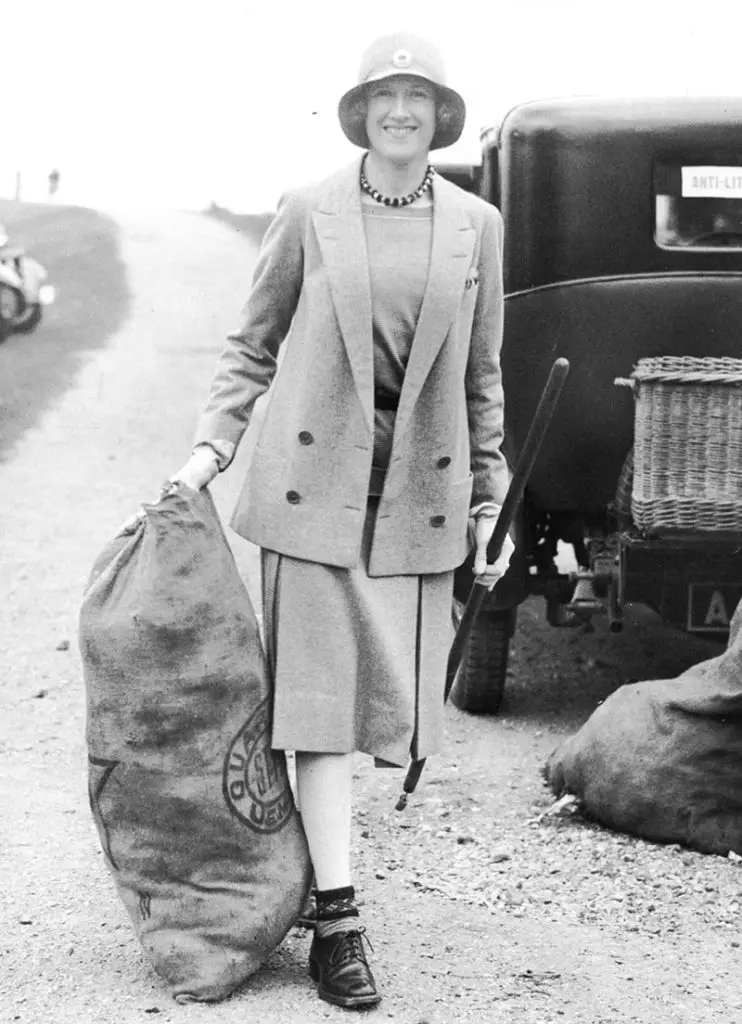
Despite certain foods, supplies, and money being in short supply, it didn’t stop local people coming up with ingenious ways to raise money or simply putting their hands in their pockets to get £5,000 together to pay for a Spitfire. Fundraising efforts included aluminium recycling, jumble sales, football matches, tennis tournaments, card games, dances, exhibitions, concerts, and house to house collections.
And it was at this point at which the rather ironic and initial thread of the story connecting Hitler to the New Forest Spitfire Fund takes place…
It began in the last week of July 1940 when the Luftwaffe started to drop propaganda leaflets over England titled “A Last Appeal to Reason by Adolf Hitler”. The leaflets contained a transcription of a speech that Hitler had made to the Reichstag on 19 July. During the speech he appealed to the British people to accept peace terms rather than face further conflict. The content then printed on the leaflets was intended to sway public opinion in Britain, portraying him as a reasonable figure seeking peace. However, the effort was largely dismissed by the British government as well as the public, who saw it as a cynical ploy rather than a genuine offer of peace. Most people who picked the leaflets off the ground treated them with the disdain they deserved, so threw them on the fire, or disposed of them. Some would go on to be used for recycling as shown in the film footage below.
However, by August 1940, an enterprising woman living in the New Forest village of Beaulieu had a rather ingenious idea. Her name was Mrs Louise Rachel Shennan, she was forty years old and lived in a house called “Oldways”. For some reason I’ve not been able to yet establish, she was given a large pile of Hitler’s propaganda leaflets by a RAF Pilot Officer.
Mrs Shennan decided to start selling the leaflets back to people in the New Forest as souvenirs for half a crown each,with all the proceeds going into the fundraising pot. She told a newspaper how the leaflets were “selling like hot cakes”, with some undoubtedly being sold back to people who had binned their leaflets previously.
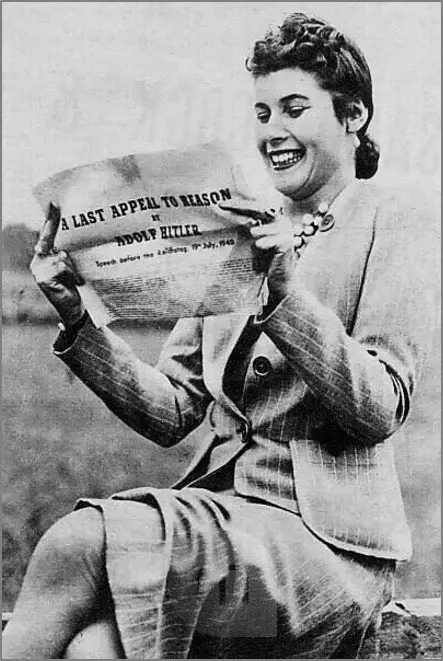
Once the New Forest villages combined all of their efforts, an initial round of fundraising reached £5,000, which was enough to buy a new RAF Spitfire in September 1940. The Spitfire was aptly named the ‘The New Forest’. Such was the enthusiasm for the project that another £5,000 was raised just two months later, meaning the New Forest Spitfire Fund could then finance another aircraft. The next one was called ‘The King Rufus’. Sadly, neither Spitfire would last long in service. Once built, The New Forest served with No.54 Squadron RAF but was damaged in combat just two days after being assigned in June 1941. After a repair, she lasted just a few more days before crashing into Chichester Harbour. The King Rufus was lost in action in July 1941.
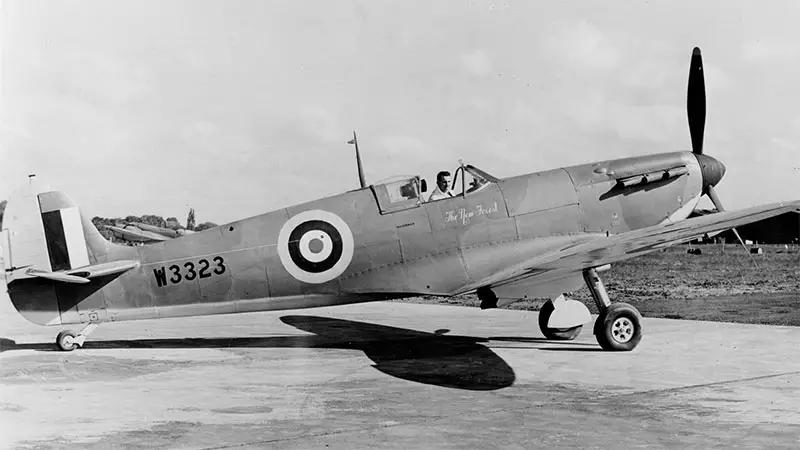
As we know, Spitfires (and Hurricanes) contributed to victory in the Battle of Britain. Without the fundraising efforts around the country, many of those aircraft might not have been produced.
But amongst the myriad of contributions to the local New Forest Spitfire Fund, Mrs Shennan’s selling of Hitler’s propaganda leaflets stands out for its ironic twist of fate. Unbeknownst to Hitler and his administration, the very resources they had seized to fuel their war efforts inadvertently ended up financing the construction of a Spitfire which would ultimately be used to combat the Luftwaffe.
It’s said that funds raised throughout Britain raised enough money for about 2,600 Spitfires. Did all of this money go directly into production though? Probably not, but instead into a larger government pot that was spent on whatever was needed at the time. It’s very likely the Spitfires would have been produced regardless.
But it’s certainly true that the Spitfire Fund significantly boosted public morale at a time it was needed, and any money being contributed to the government undoubtedly helped support the RAF’s ability to maintain aerial superiority during the Battle of Britain.
As a postscript, you might be interested to know about the National Spitfire Project. It’s a modern day project to raise money to build a national monument commemorating the Spitfire in Southampton.
Sources
- Hampshire Advertiser, 17 August 1940
- Western Gazette, 16 August 1940

